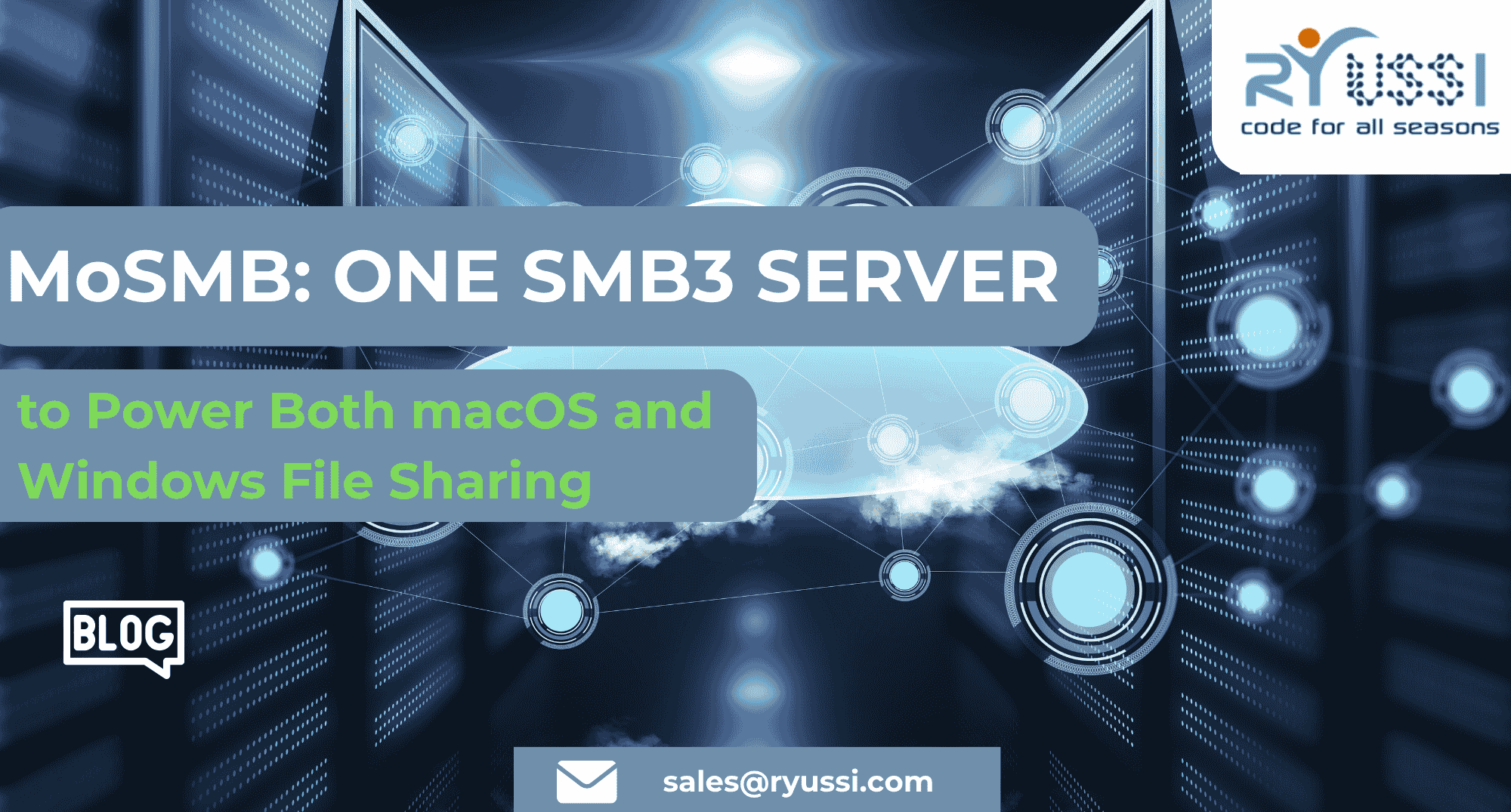What is Hyper-V over SMB use case?
se case
Earlier Microsoft only offered block-based shared-storage like FC or iSCSI, which is a complex, expensive and limiting option.
SMB 3.0 protocol gives a new and better way to store Hyper-V Virtual Machine on a shared storage. In this use case, Hyper-V can store live virtual machine files, which includes configuration, virtual hard disk (VHDX) files, and snapshots on SMB file shares.
How does MoSMB support the Hyper-V use case?
To make this happen, MoSMB supports a lot of performance, security and availability features i.e. SMB 3.0 features such as Multichannel, Transparent Failover, SMB Direct (RDMA), Encryption, Scale Out, Remote Volume Shadow Copy Service (RVSS) and many others including the earlier SMB 2.x features. These features are described below.
- SMB Scale Out With SMB Scale Out, multiple MoSMB servers can be clustered together to deliver file services to a pool of clients. MoSMB enables users to scale shared bandwidth by adding MoSMB nodes to the cluster, as the maximum share bandwidth is the aggregate bandwidth of all MoSMB nodes and not limited to the bandwidth of a single cluster node. The cluster can even be dynamically partitioned into subsets and have a subset of the cluster nodes serve a set of shares and have another subset serve another set of shares. Further, the administrator can transparently redirect SMB client connections to a different MoSMB cluster node to better balance the cluster load.
To illustrate further, this is achievable by implementing MoSMB with cluster mode enabled. Consider any distributed file server cluster e.g. GlusterFS. When MoSMB is configured on each GlusterFS node and the Gluster volume is exported as a MoSMB share, the resultant MoSMB cluster acts as a scale-out file server. Please refer to the diagram below for details.
- SMB Multichannel MoSMB increases the network performance and availability for File Servers by supporting SMB Multichannel.
With Multichannel, MoSMB aggregates of bandwidth when multiple NICs are available. MoSMB also supports utilization of multiple CPU cores concurrently when the NICs support Receive Side Scaling (RSS). MoSMB also improves fault tolerance by supporting automatic failover in case of loss of network connection.
- SMB Direct (SMB over Remote Direct Memory Access [RDMA]) MoSMB supports SMB Direct for high performance file access scenarios (high throughput and low latency) like Hyper-V SQL Server, Media Server, HPC etc, while using very limited CPU. The feature requires use of RDMA capable NICs supporting iWARP or RoCE.
- SMB Encryption MoSMB provides end-to-end encryption of SMB data in flight and at rest and protects data from eavesdropping occurrences on untrusted networks. Encryption can be configured on a per share basis or for the entire file server. SMB encryption involves no additional hardware and no extra cost.
Additionally, MoSMB supports AES-128-GCM crypto algorithm, pre-authentication integrity and secure dialect negotiation.
- VSS for SMB file shares MoSMB leverages the existing VSS infrastructure to enable application-consistent shadow copies of server application data stored on SMB file shares, for backup and restore purposes. In addition, MoSMB enables backup applications to read the backup data directly from a shadow copy file share rather than involving the application server in the data transfer.
- SMB Directory Leasing By use of SMB Directory Leasing, MoSMB improves application response times significantly, especially over high latency networks. With the use of directory leases, roundtrips from client to server are reduced since metadata is retrieved from a longer living directory cache.
- SMB Transparent failover MoSMB supports Transparent Failover and Continuous Availability by use of Witness protocol. In planned failover scenario, transparent failover enables administrators to perform hardware or software maintenance of nodes in a clustered file server without interrupting server applications storing data on these file shares. In unplanned failover scenario, if a hardware or software failure occurs on a MoSMB node, SMB clients transparently reconnect to another cluster node without interrupting server applications that are storing data on these file shares.
What is the advantage of using MoSMB to support the Hyper-V use case?
By supporting the requisite SMB 3.0 features, MoSMB is a powerful solution to implement the Hyper-v over SMB use case. Some of the advantages of using MoSMB are listed below.
- High Performance. MoSMB has some great supporting features which can help you increase performance. RDMA which is a technology which can increase networking performance by multiple times and SMB Multichannel which allows you to use multiple network adapters for failover and load balancing and lets you make the most out of your hardware.
- With MoSMB, Encryption there is a very easy solution and involves no additional hardware or cost.
- Continuous availability. Some applications need continuous availability and not just high availability. With MoSMB, this is possible using Witness protocol. Also scenarios like live migration and live storage migrations are possible.
- Reduced capital expenditures.By using Hyper-V over SMB, you can reduce cost for infrastructure dramatically. You can also continue to use your existing converged network with no specialized storage networking hardware.
- Reduced operating expenditures.You can reduce operating costs because there is no need for a dedicated storage team and specialized storage expertise.
- Ease of provisioning and management.The common problem of block storage is that the Hyper-V host has to handle the storage connection. With MoSMB you only manage file shares which is far easier than managing storage fabric and logical unit numbers (LUNs) associated with iSCSI or FC. You can also dynamically migrate virtual machines or databases in the data center.




